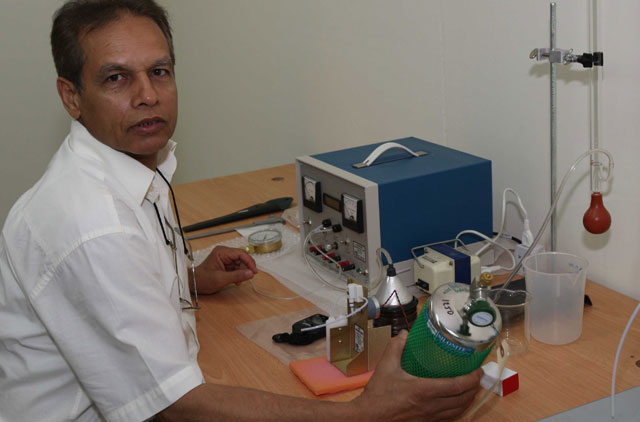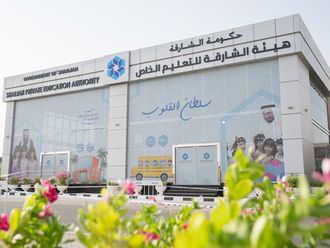
Dubai: Air pollution levels in the UAE have increased by almost 50 per cent mainly due to toxic particulate matter borne by the wind from petrochemical industries around the Gulf and industries in Europe, a group of UAE-based researchers has found.
An ongoing study compiled by physicists at the American University of Sharjah (AUS) reveals that half of the air pollution in the UAE is not created locally, but borne by winds and jet streams in the troposphere, the lower layer of the earth's atmosphere rising 17km into the skies.
Initial results show that the UAE is highly affected by emissions from the oilfields of Saudi Arabia which are transported in summer by the persistent cyclonic circulation over the Gulf region and react with other pollutants to form ozone — the main ingredient of smog.
In a separate study the AUS researchers collected 20 static air samples from across Sharjah and Dubai at three-hour intervals and found that pollution levels in the country in summer are comparable to Karachi or Mexico City.
"Paint from industrial areas, vehicles, evaporation from petrol tanks, chemicals from the petrochemical industry, silica and sand from construction sites and the natural environment — it's all in there," said Dr Tariq Majeed, assistant professor of physics at AUS.
More research and funding needs to be made available to study air pollution levels further in the UAE, he said. "We've had a glimpse and it is not good. We need more data to see what will happen year on year."
Remote readings
Since 2009, thanks to a grant from the Emirates Foundation, Dr Majeed and his team released hydrogen-filled balloons with meteorological equipment and ozonesondes, or readers, to get a glimpse of what is in the air. The specially-made balloons stay up between 70 and 80 minutes and give remote atmospheric readings at various intervals before the balloon bursts and descends.
Sand and toxic particles from industry in the air, known as volatile organic compounds (VOCs), react with heat and sunlight and form ozone. High levels of ozone can be extremely detrimental to human health at ground level and cause respiratory diseases, amongst others.
Using software to track the backward trajectory of the wind, Majeed is able to link peaks in air pollution in the UAE recorded with the balloons, to winds passing over the country and where they originated from.
"Forty to fifty per cent of air pollution recorded in the UAE is blown in from Europe and Arabian Gulf countries, worsening the smog witnessed here — particularly in the hot summer months. We can clearly see that pollution is not 100 per cent produced here," said Dr Majeed.
Fine dust: 500 deaths in 2007
More than 500 people may have died from air pollution-related diseases in the UAE in 2007, an American study published in the Science of Total Environment journal said.
Fine particulate matter — known as PM10 — in the ambient air caused the deaths of 545 people in the UAE during the year of study, which represents approximately seven per cent of the total deaths that year. It is estimated that 209 of the deaths were in Abu Dhabi.
PM10, particles with a diameter less than 10 microns, are consistently associated with premature mortality and cardiopulmonary disease.
The research also found that, throughout the UAE, approximately 62 premature deaths were caused by ground-level ozone of which 23 were in Abu Dhabi.
The World Health Organisation 2009 UAE country profile attributes 200 deaths per year in the UAE to PM10 but does not report estimates of the burden of disease due to other air pollutants.
Poor air quality can be observed through degraded visibility and ambient measurements of air pollutants. "Other factors that contribute to degraded air quality include the frequent and severe dust storms ...and the transport of pollutants from other continents," states the report compiled by Ying Li.













